Combine two beautiful Himalayan Kingdoms in one magical tour. Enter the serene and spiritual lands of Nepal and Bhutan, and experience the countries' rich histories and unique cultural heritages. From the brightly coloured fluttering prayer flags of Nepal to the elaborate traditional dress of the Bhutanese, these captivating lands cannot fail to enchant.
Tour Highlights
Kathmandu and the Kathmandu Valley - Patan Durbar Square, Swayambhunath Pagoda, Bodhnath Buddhist stupa and various other temples and shrines
Bhaktapur Durbar Square
Thimphu - Market, Chorten’s memorial, Hand Made Paper Unit, Handicrafts Emporium
Chimi Lhakhang - beautiful temple
Paro - Paro Rinpung Dzong, Kyichu Lhakhang, The National Museum at Ta Dzong, local farmhouse and Paro market
Punakha - Punakha Dzong
Panoramic views of the Bhutanese Himalayas and incredible scenery

HIMALAYAN KINGDOMS - NEPAL & BHUTAN - SINGLES HOLIDAYS

HIMALAYAN KINGDOMS - NEPAL & BHUTAN - SINGLES HOLIDAYS

HIMALAYAN KINGDOMS - NEPAL & BHUTAN - SINGLES HOLIDAYS

HIMALAYAN KINGDOMS - NEPAL & BHUTAN - SINGLES HOLIDAYS

HIMALAYAN KINGDOMS - NEPAL & BHUTAN - SINGLES HOLIDAYS

HIMALAYAN KINGDOMS - NEPAL & BHUTAN - SINGLES HOLIDAYS

HIMALAYAN KINGDOMS - NEPAL & BHUTAN - SINGLES HOLIDAYS

HIMALAYAN KINGDOMS - NEPAL & BHUTAN - SINGLES HOLIDAYS

HIMALAYAN KINGDOMS - NEPAL & BHUTAN - SINGLES HOLIDAYS

HIMALAYAN KINGDOMS - NEPAL & BHUTAN - SINGLES HOLIDAYS

HIMALAYAN KINGDOMS - NEPAL & BHUTAN - SINGLES HOLIDAYS

HIMALAYAN KINGDOMS - NEPAL & BHUTAN - SINGLES HOLIDAYS

HIMALAYAN KINGDOMS - NEPAL & BHUTAN - SINGLES HOLIDAYS

HIMALAYAN KINGDOMS - NEPAL & BHUTAN - SINGLES HOLIDAYS

HIMALAYAN KINGDOMS - NEPAL & BHUTAN - SINGLES HOLIDAYS

HIMALAYAN KINGDOMS - NEPAL & BHUTAN - SINGLES HOLIDAYS

HIMALAYAN KINGDOMS - NEPAL & BHUTAN - SINGLES HOLIDAYS

HIMALAYAN KINGDOMS - NEPAL & BHUTAN - SINGLES HOLIDAYS

HIMALAYAN KINGDOMS - NEPAL & BHUTAN - SINGLES HOLIDAYS

HIMALAYAN KINGDOMS - NEPAL & BHUTAN - SINGLES HOLIDAYS

HIMALAYAN KINGDOMS - NEPAL & BHUTAN - SINGLES HOLIDAYS
Day 1: Begin your solo adventure with an overnight flight from London to Kathmandu, the vibrant capital of Nepal
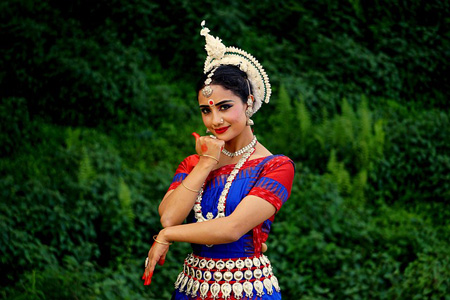
This marks the start of an unforgettable journey through the stunning Himalayan kingdoms. Prepare to meet fellow travellers and immerse yourself in the rich cultures of Nepal and Bhutan. As you fly over the majestic mountains, anticipate the breathtaking landscapes and fascinating experiences that await you.
Day 2: Arrive in Kathmandu and explore the city’s unique setting in the Kathmandu Valley.
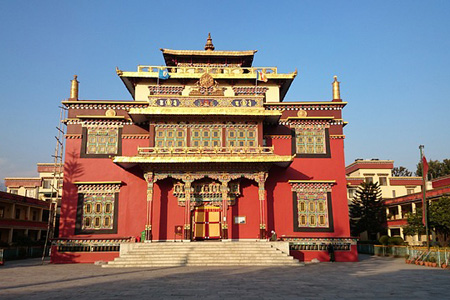
Arrive at Tribhuwan International Airport in Kathmandu and meet your guide. Transfer to your hotel and settle in. Explore Kathmandu, a city rich in history and culture, nestled in the Kathmandu Valley. Surrounded by mountains, this bustling city offers a unique blend of traditional and modern influences. Stroll through its lively streets, visit local markets, and absorb the vibrant atmosphere as you prepare for the exciting days ahead.
- Dinner Included
Day 3: Discover the historic wonders of Kathmandu, including Durbar Square and Swayambhunath Stupa.
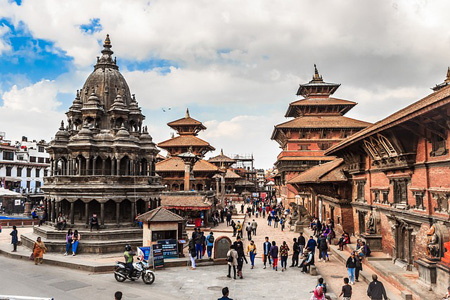
Discover the wonders of Kathmandu with a visit to Kathmandu Durbar Square, home to over 50 historic monuments. Marvel at the intricate woodcarvings of the Kumari Bahal, the residence of the Living Goddess. Explore the ancient Swayambhunath Stupa, also known as the Monkey Temple, offering panoramic views of the valley. In the afternoon, visit Patan city, renowned for its stunning Newari architecture and vibrant cultural heritage.
- Breakfast and Dinner Included
Day 4: Kathmandu to Pokhara – A city of natural beauty and tranquillity, nestled by serene lakes and mountains.
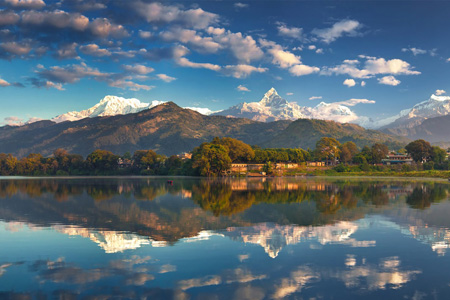
Embark on a scenic drive to Pokhara, a city of natural beauty and tranquillity. Enjoy the journey through lush landscapes and picturesque villages. Upon arrival, take in the serene ambience of Pokhara, known for its beautiful lakes and stunning Himalayan views. Explore the lakeside areas, filled with hotels, restaurants, and shops, and relax as you soak up the breathtaking scenery.
- Breakfast and Dinner Included
Day 5: Explore Pokhara -Experience the beauty of Pokhara with a sunrise view, visits to waterfalls, caves, and temples.
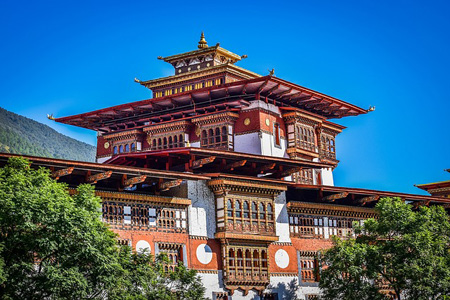
Start your day with an early morning excursion to Sarangkot for a breathtaking sunrise over the Himalayas. Enjoy panoramic views of the Pokhara Valley and the surrounding peaks. Visit Devi’s Fall, a unique waterfall, and explore the mysterious Gupteshwor Cave. Discover the vibrant Old Bazaar and visit Bindyabasini Temple, dedicated to the Hindu goddess Bhagawati. End the day with a stroll around the city’s charming streets.
- Breakfast and Dinner Included
Day 6: Return to Kathmandu for a leisurely day, exploring more of the city’s rich cultural heritage.
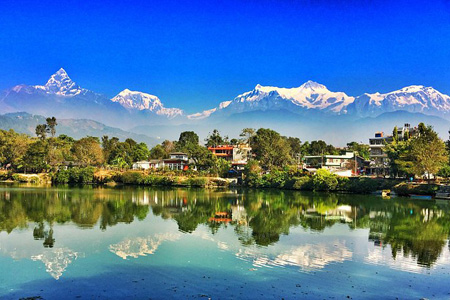
Drive back to Kathmandu, enjoying the scenic journey once more. Upon arrival, spend the rest of the day at your leisure. Explore more of Kathmandu’s cultural sites, relax at your hotel, or shop for souvenirs. Reflect on your experiences in Nepal as you prepare for the next leg of your journey to Bhutan. Enjoy a peaceful evening in the vibrant capital city.
- Breakfast and Dinner Included
Day 7: Fly to Bhutan and explore the serene beauty of Thimphu, the capital city.
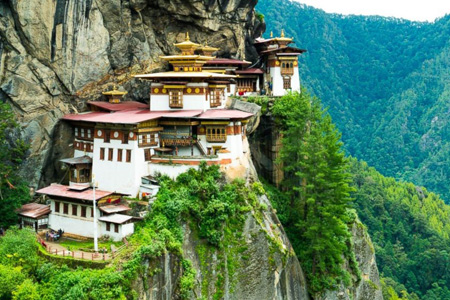
Fly to Bhutan and arrive in Paro. After completing visa formalities, meet your guide and transfer to Thimphu. Check into your hotel and relax. In the afternoon, visit Tachogang Lhakhang, the National Memorial, and Tashichho Dzong. Explore the historic fortress and monastery, which serves as the seat of Bhutan’s government. Enjoy the serene beauty and spiritual ambiance of Bhutan’s capital
- Breakfast, Lunch and Dinner Included
.Day 8: Discover Thimphu’s highlights, including the Buddha Point and Motithang Takin Preserve.
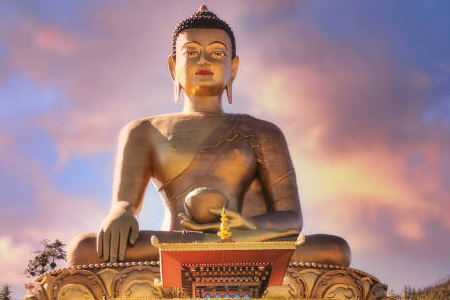
Discover Thimphu’s highlights, starting with Kuensel Phodrang (Buddha Point), home to the world’s largest sitting Buddha statue. Visit the Motithang Takin Preserve, a sanctuary for Bhutan’s national animal. Explore Changangkha Lakhang, a popular temple, and Semtokha Dzong, Bhutan’s oldest fortress. End the day at Thangthong Dewachen Nunnery, a peaceful Buddhist monastery overlooking the city. Enjoy the serene atmosphere and scenic views.
- Breakfast, Lunch and Dinner Included
.Day 9: Drive from Thimphu to Punakha, enjoying scenic mountain views and visiting historic temples and dzongs.
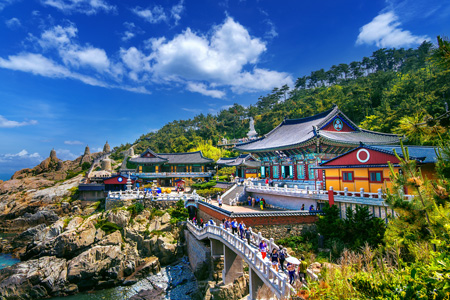
Drive to Punakha via the scenic Dochula Pass, where you’ll enjoy tea with stunning views of the Himalayan ranges. Visit Chimi Lhakhang, a temple known for its unique fertility rituals. Explore the majestic Punakha Dzong, located at the confluence of the Mo Chhu and Po Chhu rivers. The dzong’s impressive architecture and historical significance make it a highlight of your Bhutan visit.
- Breakfast, Lunch and Dinner Included
.Day 10: Punakha to Paro. Explore Paro, visiting the iconic Rimpung Dzong and its stunning architecture.
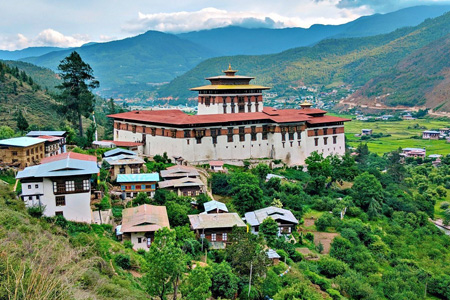
Drive to Paro, a town rich in history and culture. Visit the iconic Rimpung Dzong, a fortress with stunning architecture and breathtaking views. Explore the dzong’s intricate woodwork and beautiful courtyards. Spend the evening relaxing at your hotel or exploring Paro’s charming streets. Reflect on your journey through Bhutan as you prepare for the next day’s adventures.
- Breakfast, Lunch and Dinner Included
.Day 11: Discover Paro - Hike to the famous Tiger’s Nest Monastery and visit the ancient Kyichu Lhakhang temple.
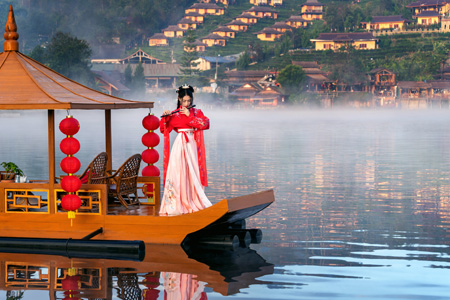
Hike to the famous Taktsang Monastery (Tiger’s Nest), perched on a cliffside. This iconic site is one of Bhutan’s most important spiritual landmarks. Visit Kyichu Lhakhang, one of the oldest temples in Bhutan, and explore its rich history. In the evening, wander through Paro’s local markets, where you can shop for traditional crafts and souvenirs. Enjoy a final night in this enchanting town.
- Breakfast, Lunch and Dinner Included
.Day 12: Fly back from Paro to Kathmandu for your return flight to the UK and reflect on your incredible journey through the Himalayan kingdoms.
Spend your final day in Nepal reflecting on your incredible journey and Prepare for your overnight return flight to the UK
- Breakfast Included
.Day 13: Arrive in London with wonderful memories and newfound friends from your solo adventure.
Arrive in London with wonderful memories of your solo adventure through Nepal and Bhutan. Reflect on the rich cultures, breathtaking landscapes, and new friendships formed during your journey. Bid farewell to newfound friends and look forward to sharing your experiences with loved ones back home.
Accommodation
Stay at 4 Star Hotels throughout the tour as detailed below or similar
- Kathmandu - Hotel Crown Imperial
- Pokhara - Atithi Resort & Spa
- Thimphu - Ramada Valley
- Punakha - Green Resort
- Paro - Resort Tashi Namgay
What is included in the tour
- Stay at 4-star Hotels throughout the tour
- Your own single-occupancy en-suite room
- Nepal (Half Board) - Daily Breakfast & Dinner
- Bhutan (Full Board) - Daily Breakfast, Lunch & Dinner
- Flights from London Heathrow
- All Taxes & Surcharges
- 20 kg Baggage allowance and 5 kg hand baggage.
- All transfers
- Coordinated site-seeing and activities as per Itinerary
- Entrance fees to the sites as per itinerary
- Return Flight from Nepal to Bhutan Included
- Bhutan Visa Fee
- Services of a GoSingles Guide on the tour
- Welcome get together
- Meet other single, like-minded travellers who wish to socialise and make new friends
Flight Timings -
| Flights | Details | Time |
| Outward | London Heathrow to Kathmandu, Nepal | 13:15 - 09:05 (next day) |
| Return | Kathmandu, Nepal to London Heathrow | 21:35 - 07:30 (next day) |
Flight timings are approximate and may be subject to change
Price & Itinerary may be subject to change
Price excludes: Nepal visa
Passport & Visa Information
When flying to Nepal from the UK, you must have a passport with at least six months of validity
Visa Requirements:
Upon entry to Nepal, a tourist visa is required: $30 (cash) for 15 days (US dollars recommended but sterling or euros accepted).
It is best to apply for the visa pre-arrival online: Online Services https://nepaliport.immigration.gov.np/online.
We suggest you print a copy to of the visa to present on arrival.
Dress Code
During the day when sightseeing, we recommend casual, lightweight cotton clothing. During spring and autumn, the night temperatures in the mountains often dip below freezing, making warm gear essential. You will find that smart casual wear is acceptable, even in the best hotels during the evening. We recommend a lightweight raincoat and an umbrella or hat to protect against rain or sun. Comfortable shoes are a “must” for sightseeing.
Your guide will advise you about observing local customs. On certain occasions, it will be necessary to wear clothing covering one’s shoulders and knees.
Kathmandu Durbar Square
Kathmandu’s number one tourist attraction swarms with life. Though a few of the square’s 50-plus monuments date from the 12th century, most are from the time of the Malla Kings. Probably the most famous building here is the Kumari Bahal, a building richly decorated with beautiful woodcarvings, which is home to the Royal Kumari, the Living Goddess, and a manifestation of the great goddess Durga. Nearby the former Royal Palace is a Mall Dynasty dwelling, once considerably more extensive than today. Within, the courtyard Nassal Chowk, originally hosted dramatic dance performances, now it is the coronation site of the Shah kings and contains some of the finest wood carvings you will see anywhere in the kingdom. The 14th century
Jagannath Mandir is the oldest temple in the area, its steps carved with inscriptions in many languages, nearby Taleju Mandir is one of the largest and finest temples in the Valley.
Swayambhunath
The most ancient and enigmatic of the Valley’s holy shrines the golden-spired stupa of Swayambhunath tops a wooded hillock. Records of its history date as far as the 5th century, but its origins are believed to be older. It is the Kathmandu Valley’s most sacred Buddhist shrine and whilst its worshippers include the Vajrayana Buddhists of northern Nepal and Tibet,Newari Buddhists are the most fervent devotees.
Kumari Temple – Living Goddess
Kumari, A ‘living goddess’ made a rare public appearance to take center stage at a religious festival in Nepal.A Kumari, meaning virgin in Nepalese, is a young prepubescent girl, considered by devotees to be incarnations of the Hindu goddess of power, Kali.
Devi’s fall
Locally known as Patale Chango (Hell’s fall) also known as Devin’s and David’s is a lovely Waterfall is about 2 km south West of Pokhara airport on the Siddhartha Highway. Legend has it that a trekker by the name of Davy was washed away by the Padi Khola and mysteriously disappeared down into an underground passage beneath the fall.
Gupteshwor Cave
Gupteshwor Gupha, a sacred cave, lies 2 km from Pokhara airport on the Siddhartha Highway leading southwest from the city. The entrance is right across from Devi's fall and the cave is almost 3 km long. It has some big hall-size rooms and some passages where you have to crawl on all fours. This cave holds special value for Hindus since a phallic symbol of Lord Shiva is preserved here in the condition it was discovered. An entrance fee of Rs. 5 is charged and taking pictures inside the cave is prohibited.
The Old Bazaar + Bindyabasini Temple
Pokhara's traditional bazaar is colorful and so are its ethnically diverse traders. In its temples and monuments can be seen ties to the old Newar Architecture of the Kathmandu valley, Located about 4 km from Lakeside, the market S original charm is still evident. This area is strewn with shops selling commodities ranging from edibles to and cloth to cosmetics and gold is a pleasant and shady spot to stroll around. The old Bazaar is also home to one of Pokhara’s most important shrines. Locally called the Bindyabasini Mandir, this white dome- like structure dominates a spacious stone – paved courtyard built atop a shady hillock. It is dedicated to Goddess Bhagawati, yet another manifestation of Shakti. The park – like grounds offers a fine picnic area, and on Saturdays, and Tuesdays when devotees flock there to offer sacrifices, it takes on a festive flavor.
Tachogang Lhakhang
Located in Paro district, on the way to Thimphu. It was founded by Thankthong Gyelpo after he experienced a vision of Guru Rimpochhe, Amitaba and Avalokiteshvara near site. The caretakers today are said to be descendants of Thangtong Gyelpo. Inside the temple one can see the masters relics, including his walking stick.The National Memorial was built by Bhutan's third king, H.M. Jigme Dorji Wangchuck who is also known as the "father of modern Bhutan." He wanted to erect a monument carrying the message of world peace and prosperity. However, he was unable to give shape to his idea in his lifetime due to pressures of state and other regal responsibilities. After his untimely demise in 1972, the Royal Family and Cabinet resolved to fulfill his wishes and erect a memorial that would perpetuate his memory and also serve as a monument to eternal peace, harmony and tranquility.
Tashichho Dzong
A Buddhist monastery cum fortress at the northern edge of Thimpu the capital city of Bhutan. The Dzong was built on the western bank of the river Wang Chu, and has historically served at the seat of the DrukDesi or the Dharma Raja of Bhutan’s government. After the kings assumed power in 1907 this post was combined with that of the king and Thimphu severed as the summer caital of the kingdom before becoming the full time capital of Bhutan.
Chimi Lhakhang
This temple was build in 1499 by Drukpa kinley’s best follower. Drukpa Kinley is popularly known as “ Devine Mad Man” of which his teaching is through sex. Your local guide will explain in detail when you reach there.
Punakha Dzong
The Pungtang Dechen Phortang Dzong is located at the confluence of the Mo Chhu and the Po Chhu River, combine to form the Puna Tsang Chu which in turn is a tributary of the mighty Brahmaputra River. The Dzhong was constructed by Zhabdrung Ngawang Namgyal Wangchuck in 1638 on the exact spot as prophesized by the Guru Rinpoche some 800 years ago. According to the prophecy of Guru Rinpoche “a person named Namgyal will arrive at a hill that looks like an elephant”. And lo behold! Zhabdrung Ngawang Namgyal found that the peak of the hill was in the shape of an elephant’s trunk and built the Dzong at that very spot.
Rimpung Dzhong
The Paro Dzhong is probably Bhutan's best known and most iconic Dzhong. This is probably the first building you will notice when you land at Paro International Airportand will probably be your first memory of Bhutan. The imposing Dzhong is perhaps the finest example of Dzhong architecture existing the world today, the massive buttered walls of the fortress dominate over the valley. The Rinpung Dzhong's names translates to the " Fortress on a heap of Jewels ".
Tiger’s Nest
Taktshang or the Tigers lair as the monastery is called, it is widely regarded is one of the most important monuments of spiritual significance in Bhutan. Its history is deeply associated with the visit of Guru Padmasambhava, the revered Indian saint who came to Bhutan in the 8th century AD.
Kyichu Lhakhang
The Jowo Temple of Kyichu is one of the oldest temples in Bhutan. The temple was built by the Tibetan King Songsten Gampo in the 7th Century AD. The Kyichu Lhakhang was one of the 108 temples constructed by him to subdue a demon that was terrorizing the people of the Himalayas.
The Lhakahng underwent many extensions during the ages with the last one being carried out in 1965 by the Queen Mother Ashi Kezang Choden Wangchuck. She added another new structure to the temple called the Guru Lhakahng. As one of the oldest Lhakahangs, it houses many important relics. One of the most important relics of the temple is a 7th century statue of Jowo Sakyamuni which is believed to have cast atthe same time as it famous counterpart in



























